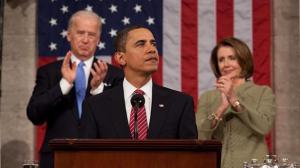President Obama outlined some goals for the country’s future last week in his State of the Nation speech. He emphasized the need for us to regain our competitive edge and what policies will be required.
A number of his proposals merit attention and action. His request for congressional approval of free trade pacts with South Korea and other countries should be embraced as a way to grow the U.S. economy. His recommendation of tax reform could reduce the huge waste of resources dedicated to tax evasion and avoidance by both companies and individuals.
On the business side, the U.S. corporate tax rate is one of the highest in the world but generates one of the lowest revenue totals relative to gross domestic product (GDP) because of the myriad of tax incentives. To improve U.S. competitiveness: (1) the corporate tax structure should be collapsed from multiple brackets, with the top taxed at 35%, to one bracket taxed at 28%; and (2) all of the more than 30 tax credits and over 75 tax exclusions, deductions, and deferrals known as “tax expenditures” should be eliminated. This approach could mitigate the backlash if tax preferences were retained for one industry but not another. A level playing field without the distortion of various tax subsidies, combined with a lower overall tax rate, would enhance both the efficiency and equity of the U.S. economy.
The President’s requests for more public investment in education, alternative energy, and infrastructure raise more questions. Clearly, education should be one of the areas receiving primary attention, but dollars are probably not the sole answer. Outguessing or countering the market with subsidized energy solutions could be both costly and counterproductive. Large investments in such projects as high-speed rail could strain budgets or capital markets further without a satisfactory or even positive rate of return.
The budget deficit still looms large both in the present and the future. This year’s deficit will total a record $1.5 trillion and amount to 9.8% of GDP. The nation’s debt will approach 70% of GDP by the end of the current fiscal year. As a benchmark, to qualify for membership in the Eurozone, a country’s deficit is required to equal no more than 3.0% of its GDP, while its debt-to-GDP ratio is limited at 60% or less.
To arrest a steady rise in U.S. indebtedness, the growth of entitlement programs, especially Medicare and Medicaid, in addition to Social Security, must be restrained. These are areas that need to be seriously addressed and sooner rather than later.
A final comment might be made on the President’s description of our goals and objectives. He posed the challenge as one of outcompeting other countries. We certainly need to be efficient and competitive, but the world economy should not be viewed as a “zero-sum game.” The U.S. should not focus on a target as just gaining a larger “share of the pie” at the expense of other countries. This can only serve to make our trading partners, such as China, anxious and defensive.
The U.S. should, instead, focus on innovation. Developing new technologies, new applications, and new markets can enlarge the economic “pie” available to the world economy and all of its constituents. How can we foster such innovation? We do not need a government engaged in picking “winners” and “losers” and granting various incentives. Rather, just give us low tax rates and less regulation and entrepreneurs will take the lead.
